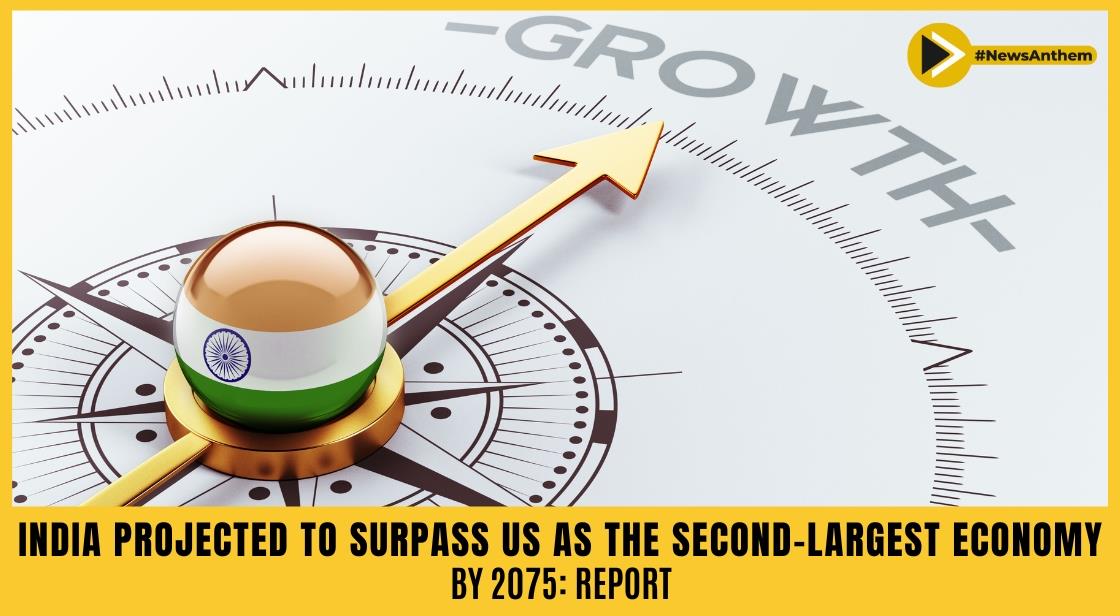India Projected to Surpass US as the Second-Largest Economy by 2075: Report

News Synopsis
India's Journey to Becoming the Second-Largest Economy
Goldman Sachs Report Highlights Favorable Factors According to a report by investment bank Goldman Sachs, India is expected to surpass countries like Japan, Germany, and the United States to become the world's second-largest economy by 2075.
The report attributes this growth potential to several key factors, including favorable demographics, innovation and technology advancements, increased capital investment, and rising worker productivity. Despite currently being the world's fifth-largest economy, India is projected to make significant strides in the coming decades.
The Role of Demographics and Innovation
Leveraging Favorable Demographics and Technology Goldman Sachs Research's India economist, Santanu Sengupta, emphasizes the importance of India's demographics and innovation in driving its economic growth. With a relatively low dependency ratio compared to regional economies, India is well-positioned to leverage its young and growing workforce.
The report also highlights India's progress in innovation and technology, stressing that it will play a crucial role in increasing worker productivity and achieving greater output in the country's economy.
Infrastructure Development and Private Sector Investment
Driving Growth through Infrastructure and Job Creation The Goldman Sachs report underlines the Indian government's focus on infrastructure development, such as roads and railways, as a catalyst for economic growth.
The report suggests that it is an opportune time for the private sector to invest in manufacturing and services to create more jobs and absorb the large labor force. By expanding capacity and generating employment opportunities, India can further bolster its economic growth potential.
Potential Challenges and Risks
Labor Force Participation and Export Dynamics The report points out potential challenges that could hinder India's growth trajectory. One concern is the declining labor force participation rate, particularly among women.
Increasing opportunities for women and overall labor force participation will be crucial to unleash India's full growth potential. Additionally, the impact of net exports on India's growth has been mixed. However, the report takes an optimistic view, citing the cushioning effect of service exports on the current account balance.
India's Demographic Advantage
Young Population and Long-Term Growth Prospects India's demographic advantage is a significant factor contributing to its growth potential. With nearly half of its population below the age of 25, India has a youthful workforce that is expected to drive economic growth until 2065.
Unlike other countries, India's share of the population aged 65 and older is projected to remain relatively low until 2063, providing a demographic advantage for sustained economic expansion.
Here are some relevant and latest facts for the news:
-
India's population is projected to reach 1.6 billion by 2050, making it the most populous country in the world.
-
India's working-age population is also expected to grow significantly in the coming decades, which will provide a major boost to the economy.
-
India has made significant progress in innovation and technology in recent years.
-
The Indian government is investing heavily in infrastructure development, which is another key driver of growth.
-
The private sector in India is also becoming more active, which is helping to drive economic growth.
However, there are also some risks to India's growth.
-
The labor force participation rate in India has declined in recent years, which could slow down economic growth.
-
Net exports have also had a negative impact on India's economy in recent years.
-
India needs to address these risks in order to achieve its full potential.
Conclusion
The Goldman Sachs report highlights India's promising trajectory towards becoming the second-largest economy globally.
With a combination of favorable demographics, innovation, infrastructure development, and private sector investment, India is poised for significant economic growth in the coming decades.
However, addressing challenges such as labor force participation and export dynamics will be crucial to fully unlock India's growth potential.
You May Like









